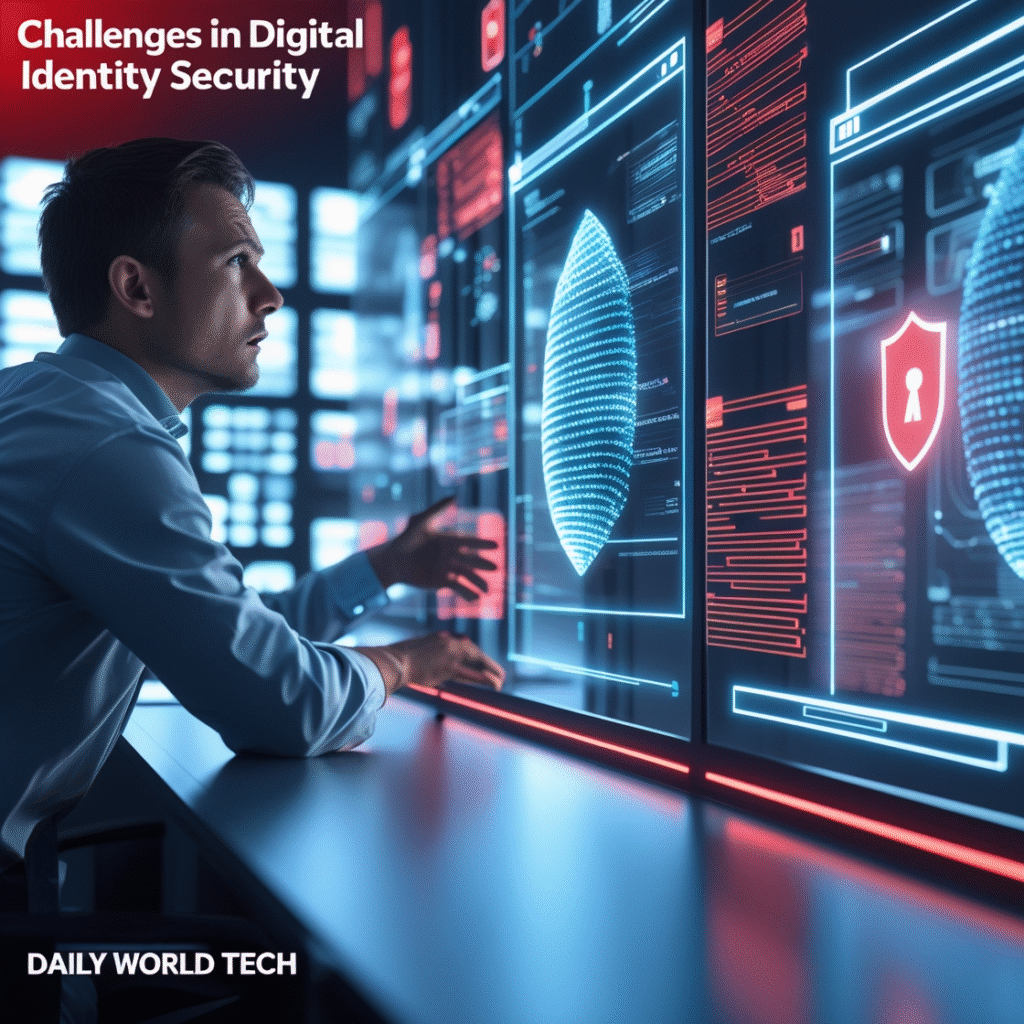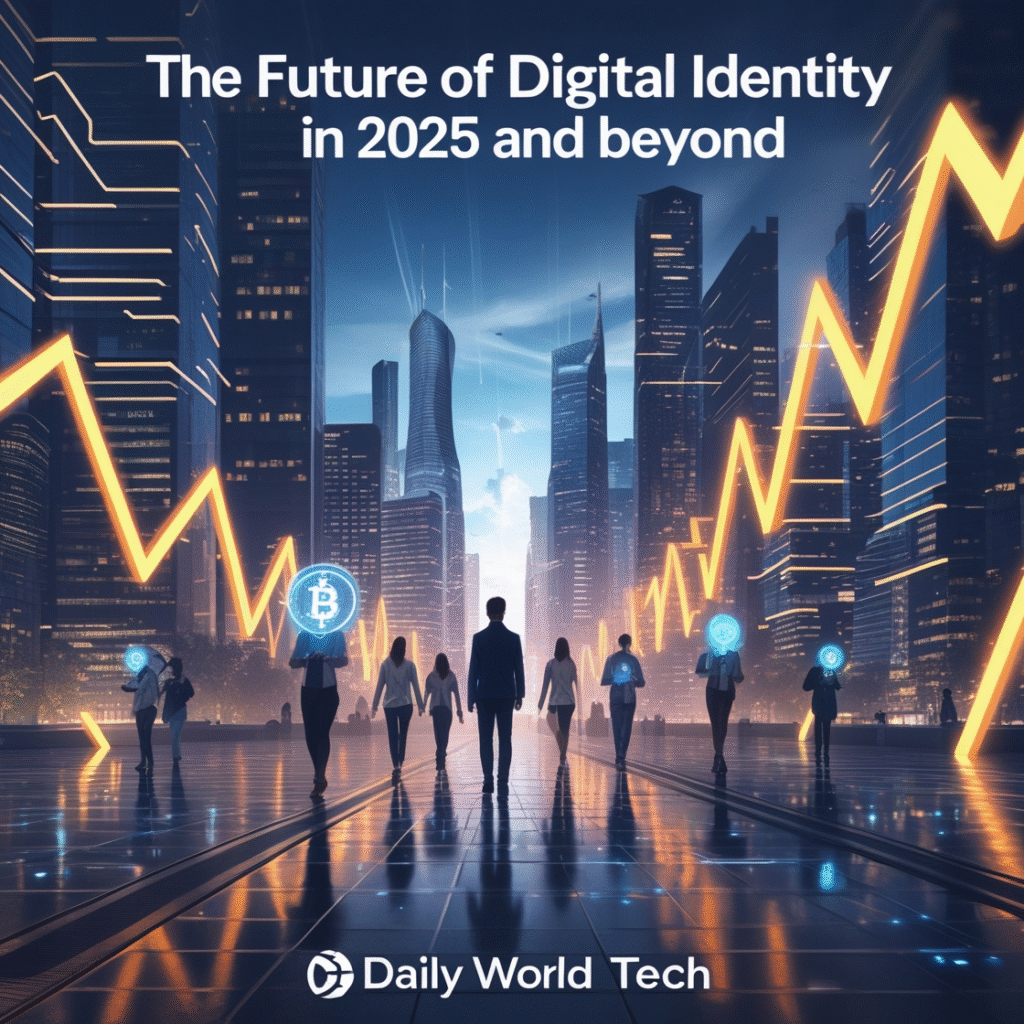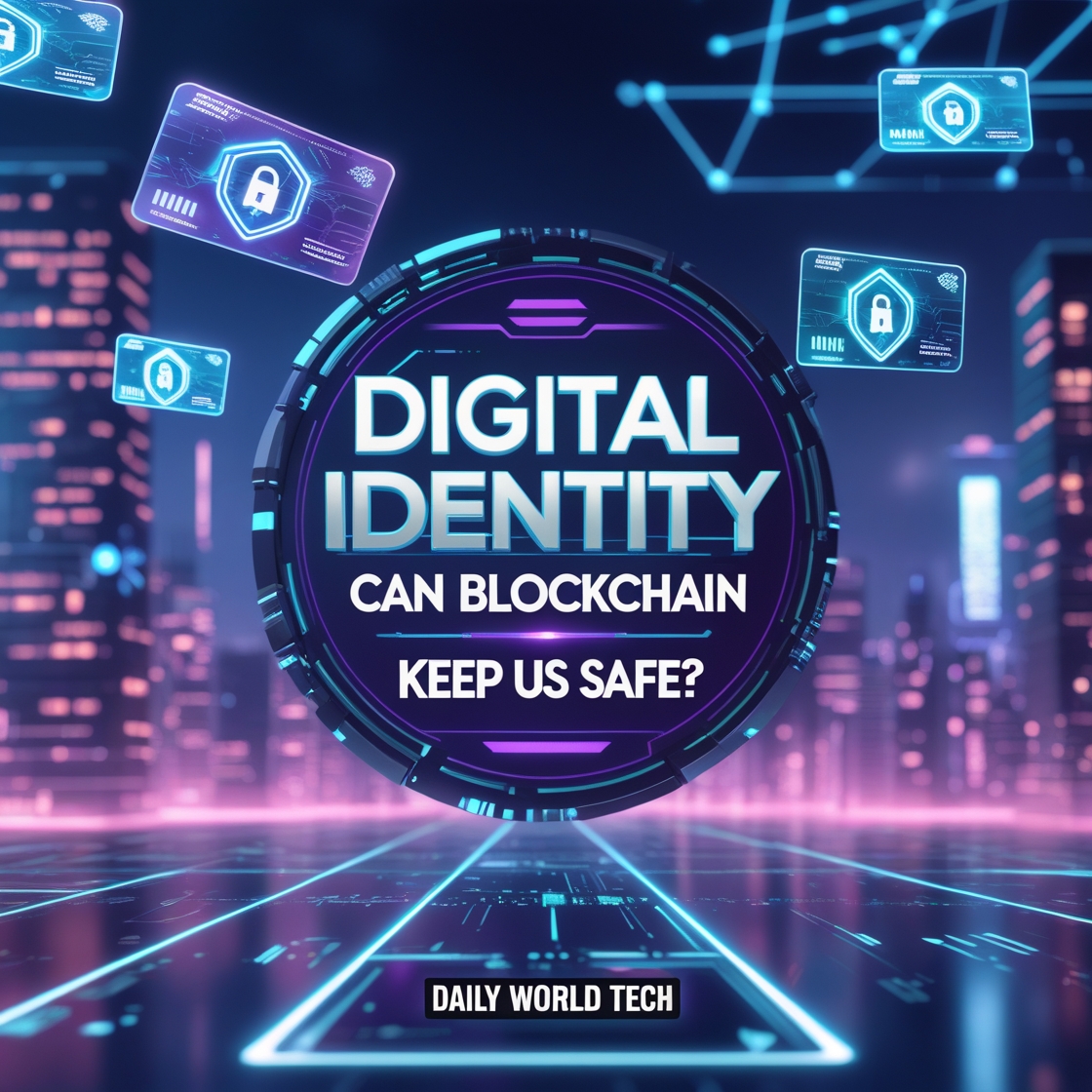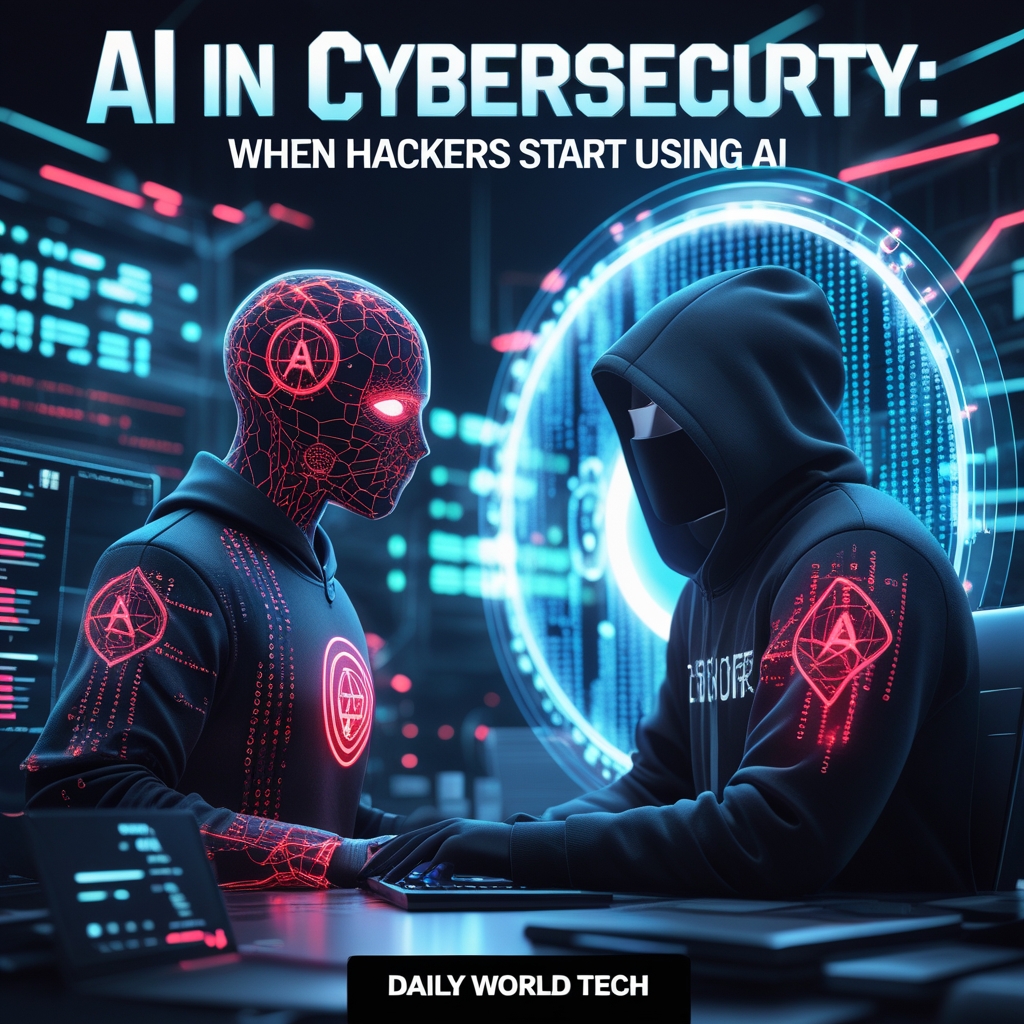In my digital-first world of 2025, your identity is more than your passport, driver’s license, or even ID card. In modern times, we cannot imagine life without digital platforms joining almost all spheres of our lives together—banking, healthcare systems, education, social media, government services, and even workplaces.
As digital systems have become this important to rely on, the idea of digital identity has moved to the limelight. But as we digitize our identities, the higher the risks to our privacy and security. Cyberattacks, identity theft, and data breaches continue to increase and take unusual proportions, leading us to pose a critical question:
Is blockchain able to keep our digital identities secure?
This blog explores the meaning of digital identity in 2025, its challenges, how blockchain reinforces it, and whether it can provide secure, decentralized identity control in the years to come.

What Is Digital Identity?
Digital identity is the set of data that identifies an individual, an organization, or a machine in the digital arena. It includes:
- Personal identifiers: Name, date of birth, social security numbers, phone numbers, and addresses
- Digital traces: App usage, social media accounts, browsing history, and search history
- Biometric data: Voice recognition, fingerprints, facial scans, and retina patterns
- Behavioral identifiers: Typing speed, location, spending habits, and device usage patterns
By 2025, mere usernames and passwords have expanded into broader concepts of digital identity. Governments and private institutions are now moving to digital forms of ID that combine biometrics, encryption, and artificial intelligence for verification.
Examples:
- India’s Aadhaar application is one of the world’s largest biometric identification systems.
- The European Union has introduced the EU Digital Identity Wallet.
- Countries like China and Singapore are testing blockchain-supported identity solutions.
While these advancements offer convenience and efficiency, they also open the door to massive privacy risks. A single hack into centralized databases can expose millions of users to identity theft, fraud, and surveillance.
The Big Concern About Digital Identity Security
In 2025, cybercrime has grown into a multi-trillion-dollar industry. Reports show that identity-related breaches are among the most common cyberattacks.
Key Concerns:
- Weak Centralized Databases
Most digital identities are stored in centralized databases managed by governments or enterprises. These are “gold mines” for hackers—once breached, millions of identities can be exposed. - Identity Theft and Fraud
Criminals steal credentials to open fraudulent bank accounts, apply for loans, or conduct illegal transactions. By 2025, AI-based phishing has made identity theft even easier. - Privacy Issues
Tech giants collect and sell personal data, raising concerns about ownership and control. Users have little to no say in how their identity data is used. - Digital Exclusion
Billions still lack secure identification systems. Without them, they cannot access banking, healthcare, or education. - Surveillance & State Control
Some governments use digital ID systems for mass surveillance, creating concerns about personal freedom and human rights.
👉 The demand for a secure, user-centric, and tamper-resistant system has never been higher. This is where blockchain enters the discussion.

The Challenges of Traditional Digital Identity Systems
Before exploring blockchain’s potential, it’s important to understand why current digital identity systems face such critical issues.
1. Centralization of Data
Most digital identities today are stored in centralized databases. For instance, government records, bank KYC (Know Your Customer) data, or social media accounts are managed by single entities. This centralization creates a single point of failure, making it easier for hackers to target and exploit.
2. Rising Cybercrime and Identity Theft
According to cybersecurity reports, millions of identities are stolen each year. Hackers sell personal information on the dark web, leading to fraud, impersonation, and financial loss. The more interconnected our systems become, the more vulnerable identities are.
3. Privacy Concerns
Companies often collect and monetize user data without consent. From targeted advertising to large-scale surveillance, individuals have little control over how their digital identities are used.
4. Global Accessibility Issues
Billions of people worldwide still lack reliable identity documentation. Without a proper ID, individuals face barriers in accessing education, healthcare, financial services, and voting rights. Digital identity could solve this problem—but only if it is inclusive and secure.

What Is Blockchain, and Why Does It Matter for Digital Identity?
Blockchain is a decentralized, distributed ledger technology where data is stored across a network of computers. Unlike traditional centralized systems, blockchain offers transparency, immutability, and security.
Key features of blockchain relevant to digital identity include:
- Decentralization – No single entity owns or controls the system.
- Immutability – Once data is recorded, it cannot be altered or deleted.
- Transparency with Privacy – Transactions are visible but protected through cryptographic techniques.
- Self-Sovereign Identity (SSI) – Individuals can own and control their digital identities without relying on third-party intermediaries.
By leveraging blockchain, digital identity could move away from centralized control and empower individuals with ownership of their personal information.
Blockchain and Self-Sovereign Identity (SSI)
The concept of Self-Sovereign Identity (SSI) is at the heart of blockchain-based identity systems. SSI allows individuals to store their identity credentials in digital wallets and selectively share information when needed.
For example, instead of handing over your full ID to prove your age at a bar, you could use an SSI system to share only the fact that you are above 18—without revealing your name, address, or date of birth.
This selective disclosure is made possible through zero-knowledge proofs (ZKPs), a cryptographic method that lets you prove something without revealing the underlying data.
SSI has the potential to make digital identities:
- More private
- More secure
- More user-controlled
- Globally interoperable
Real-World Use Cases of Blockchain Digital Identity in 2025
As of 2025, blockchain-based digital identity systems are already being implemented in various sectors. Let’s look at some examples:
1. Banking and Finance
Banks are adopting blockchain for KYC and AML compliance. Instead of customers repeatedly submitting personal documents, a blockchain-based identity can verify them once and share them across institutions securely. This reduces fraud, lowers costs, and speeds up processes.
2. Healthcare
Blockchain ensures patients have full control of their health records. Rather than hospitals holding sensitive data, individuals can share records securely with doctors, insurers, or researchers. This minimizes risks of medical data leaks and enables better healthcare delivery.
3. Government Services
Countries like Estonia and India are experimenting with blockchain-based e-governance. Citizens can use blockchain IDs to access services such as voting, tax filing, and property registration, reducing bureaucracy and corruption.
4. Travel and Immigration
Airports and immigration authorities are exploring blockchain IDs to streamline security checks, reduce paperwork, and fight passport fraud. A blockchain identity could act as a universal digital passport.
5. E-Commerce and Online Platforms
Users can prove their authenticity without exposing sensitive data. For example, blockchain could help reduce fake accounts, spam, and fraud in online marketplaces and social media.
Benefits of Blockchain in Digital Identity
- Enhanced Security – Tamper-proof identities reduce the risk of fraud and hacking.
- User Control – Individuals decide who accesses their data.
- Reduced Costs – Less duplication of verification processes for organizations.
- Global Inclusivity – Blockchain IDs can empower the unbanked and undocumented.
- Transparency – Governments and institutions can provide more open, trustworthy services.
The Limitations and Risks of Blockchain-Based Identity
Despite its promise, blockchain is not a perfect solution. Several challenges remain:
1. Scalability
Blockchain networks may struggle to handle billions of identity transactions globally.
2. Interoperability
Different countries and organizations may adopt incompatible systems, reducing the effectiveness of a global identity solution.
3. Regulatory Hurdles
Governments may be hesitant to give up control over identity systems. Laws on privacy, data protection, and compliance differ across regions.
4. User Responsibility
With self-sovereign identity, users must safeguard their private keys. Losing a private key could mean losing access to one’s digital identity permanently.
5. Energy Consumption
Some blockchains consume high amounts of energy, raising concerns about sustainability. However, newer consensus mechanisms like Proof of Stake (PoS) are addressing this issue.
Blockchain vs. Traditional Identity Systems
| Feature | Traditional Identity Systems | Blockchain-Based Identity |
| Control | Centralized (govt., banks) | Decentralized (users) |
| Security | Vulnerable to breaches | Cryptographically secure |
| Privacy | Limited, often exploited | High, user-controlled |
| Cost | High, repetitive processes | Lower, streamlined |
| Accessibility | Excludes undocumented people | Potentially global |
| Transparency | Limited, opaque | High, auditable |

The Road Ahead: Digital Identity in 2025 and Beyond
By 2025, digital identity is no longer just a technology issue—it’s a human rights issue. Identity is the foundation of economic participation, access to services, and digital freedom. Blockchain offers a revolutionary approach, but adoption depends on several factors:
- Governments creating global standards for blockchain IDs.
- Businesses and institutions agreeing on interoperable frameworks.
- Educating citizens to responsibly manage their self-sovereign identities.
- Balancing innovation with regulation to prevent misuse.
The future of digital identity may not be entirely blockchain-based, but blockchain will certainly play a central role in shaping safer, more democratic systems.











